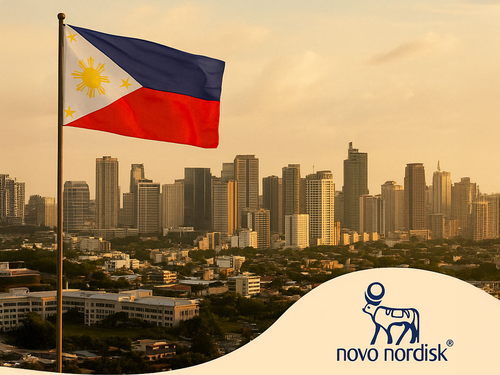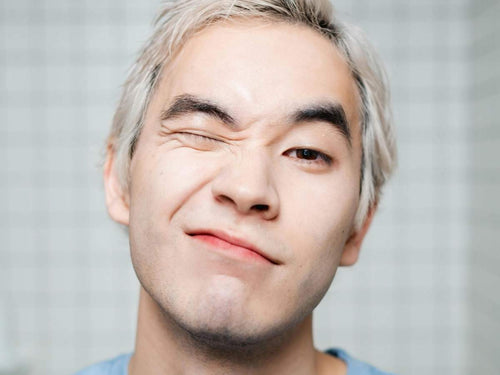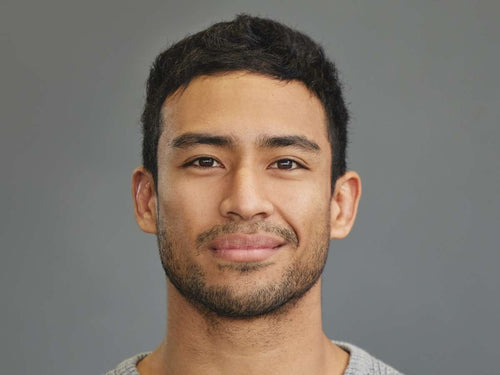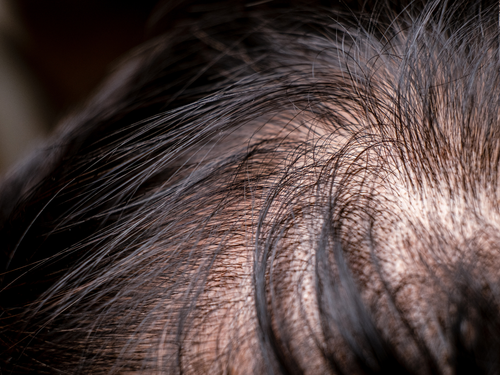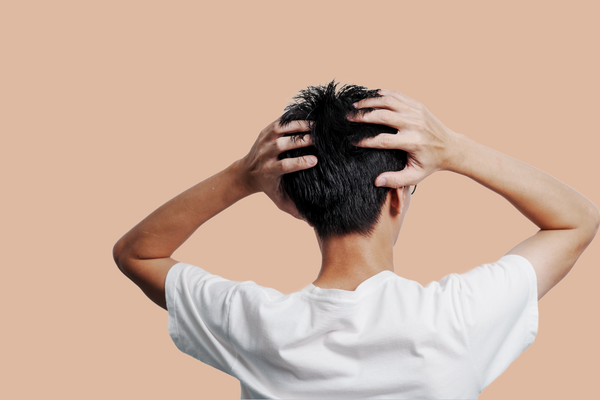How Long Before Minoxidil Starts Working for Men in the Philippines?
Hair loss is a frustrating and often emotional experience for many Filipino men.

Hair loss is a frustrating and often emotional experience for many Filipino men. Whether it's a receding hairline, thinning crown, or full-blaown bald spots, one of the most commonly recommended over-the-counter solutions is minoxidil. But a question we frequently hear at Andyou is: "How long before minoxidil starts working for men in the Philippines?"
If you’ve just started using minoxidil, or you're considering it, this article breaks down what you can realistically expect, when results might show, and how to maximize your chances of success—using both science and real-life experiences from Filipino users.
What Is Minoxidil and How Does It Work?
Minoxidil is a topical solution widely used to support scalp and hair health. Originally developed for high blood pressure, it was found to have a side effect that many welcomed hair growth.
In the Philippines, minoxidil is available in both 2% and 5% strengths, with 5% typically recommended for men. It’s sold under several brand names and can be found in foam or liquid form. Available in select pharmacies and through licensed retailers in the Philippines. Consult a doctor before use.
How Minoxidil Works on a Cellular Level
Minoxidil shortens the telogen (resting) phase of the hair cycle and lengthens the anagen (growth) phase. It also enhances the size of hair follicles, allowing them to produce thicker hair strands. While it doesn’t alter the underlying cause of androgenetic alopecia (DHT sensitivity), it counteracts its effects on follicles.
Scientific Insight:
-
According to a study published in The Journal of the American Academy of Dermatology, 5% topical minoxidil resulted in 45% more hair regrowth compared to 2% in men.
-
A 2020 meta-analysis confirmed its efficacy in treating androgenetic alopecia (male pattern baldness), especially with consistent use.
-
Research in the International Journal of Trichology indicates that adherence to a twice-daily regimen is crucial for sustained results.
How Long Before Minoxidil Shows Results?
Short answer: Most men in the Philippines start seeing visible results between 3 to 6 months of consistent, twice-daily use.
Let’s explore a deeper, more realistic timeline:
What to Expect Month-by-Month
Month 1–2: The Shedding Phase
-
Don’t panic—this is actually a good sign.
-
Minoxidil causes weak hairs to shed, making way for newer, stronger hairs.
-
This is known as “telogen effluvium,” and is a temporary, self-limiting reaction.
-
Many Filipino users report mild to moderate hair fall in the early weeks.
Month 3–4: Early Signs of Growth
-
Fine “baby hairs” (vellus hairs) start to appear, especially around the hairline or crown.
-
Thinning areas may look slightly fuller due to better blood circulation.
-
Some users notice slower hair loss rather than new growth initially, which is still a positive outcome.
-
You may also notice healthier scalp texture and reduced itching.
Month 5–6: Noticeable Improvement
-
Hair becomes visibly denser and darker.
-
Some users notice improvements in scalp appearance over time. Supporting circulation through gentle scalp care may complement professional guidance
-
A combination of reduced shedding and new hair growth results in a fuller appearance.
-
Many Filipino men report peak satisfaction around this time.
Beyond Month 6: Maintenance & Continued Growth
-
Minoxidil must be continued indefinitely to maintain results.
-
Discontinuing can cause new hairs to fall out within 3–4 months.
-
Some users see even more improvement up to the 12-month mark.
-
There are cases where results continue to improve for over a year, especially when combined with other therapies.
Real Experience:
Mark, a 32-year-old from Cebu, noticed visible thickening on his crown after 4 months. "I didn’t see anything at first and thought it wasn’t working. But then, small hairs started growing where I was thinning. Now, I'm in my 7th month and it’s part of my daily routine."
Dealing with Expectations and Mindset
It’s crucial to approach minoxidil treatment with the right mindset. Many Filipino users stop too early because they expect instant results. Understanding what to realistically expect helps prevent disappointment and encourages consistency.
Common Emotional Responses:
-
Impatience: Seeing no change in the first 2 months is common.
-
Anxiety about Shedding: Feeling worse before it gets better can be stressful.
-
Doubt: Users may wonder, “Is it really working for me?”
Our Advice:
-
Take progress photos monthly under the same lighting.
-
Track the areas you're treating to look for density changes.
-
Join local communities or forums where Filipino users share journeys for motivation.
-
Remind yourself that this is a long-term commitment to hair health, not a quick fix.
-
Ask a trusted friend or barber to give you honest feedback about your hair’s condition.
Additionally, understanding that minoxidil is only one part of a holistic approach to hair wellness can help manage expectations. Addressing internal health, such as nutrition, hormones, and lifestyle factors, is just as critical as applying topical solutions.
Tips to Boost Minoxidil Results
To get the most out of your minoxidil journey, consider these expert-backed tips:
-
Stay consistent: Set alarms or pair application with another habit (like brushing teeth).
-
Avoid harsh shampoos: Use gentle, sulfate-free products to protect your scalp.
-
Eat hair-healthy foods: Include protein, zinc, iron, and biotin-rich items in your diet.
-
Try microneedling: Studies suggest pairing minoxidil with microneedling can improve absorption and outcomes.
-
Massage your scalp: It enhances circulation and helps spread the product evenly.
-
Stay hydrated: A healthy scalp starts from within.
-
Be patient and persistent: Document changes, trust the process, and don’t expect miracles overnight.
When to Seek Professional Help
If you’ve used minoxidil for over 6 months with no visible improvement, consult a dermatologist. There may be underlying conditions such as:
-
Scalp psoriasis
-
Fungal infections
-
Hormonal imbalances
-
Telogen effluvium due to stress or illness
Board-certified dermatologists in the Philippines can also recommend combination therapies, such as finasteride or low-level laser therapy.
Many clinics now offer virtual consultations, making it easier for men in remote areas to access hair loss treatment. The key is getting a professional diagnosis early, especially if you notice rapid or patchy hair loss.
You can also check out our Hair Loss Guide for deeper insights.
Patience Pays Off
Minoxidil isn’t an overnight miracle, but for many Filipino men, it’s a reliable and affordable way to combat hair loss. Results typically take 3–6 months, and consistency is non-negotiable.
With a science-backed approach, localized lifestyle adjustments, and a touch of patience, you can significantly improve your hair health.
“The key is not just using minoxidil, but sticking with it long enough to let it work.” — Dr. Anna Lopez, Filipino dermatologist and hair loss specialist
If you’ve ever felt discouraged by the early stages of minoxidil use, know that you're not alone. Hair regrowth takes time, and the first few months can feel slow. But stay the course, and most users are rewarded with visible, tangible results.
Ready to take control of your hair journey? Consult a licensed dermatologist or healthcare professional for advice on suitable options.

Explore More Guides and Articles You'll Love
Explore our latest guides and articles to help you learn more about the latest trends in the industry.

Stress, Sweat, and the Sun: The Real Reasons Filipino Men Lose Hair Early
Filipino men often notice hairlines changing earlier than expected.
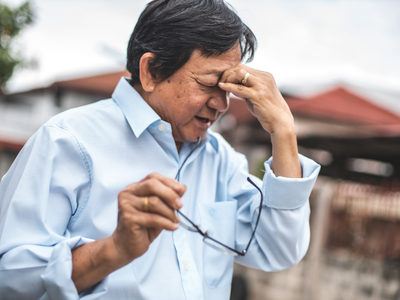
Can Stress Alone Make You Bald? The Science Behind Filipino Hair Loss
Many Filipinos are familiar with how stress can take a physical toll, from restless nights to sudden hair shedding.

Does Biotin Really Help Hair Grow Back? Filipino Review
Hair loss is a concern shared by many Filipinos, from students in Quezon City dealing with academic stress to call center agents managing erratic sleep schedules.

